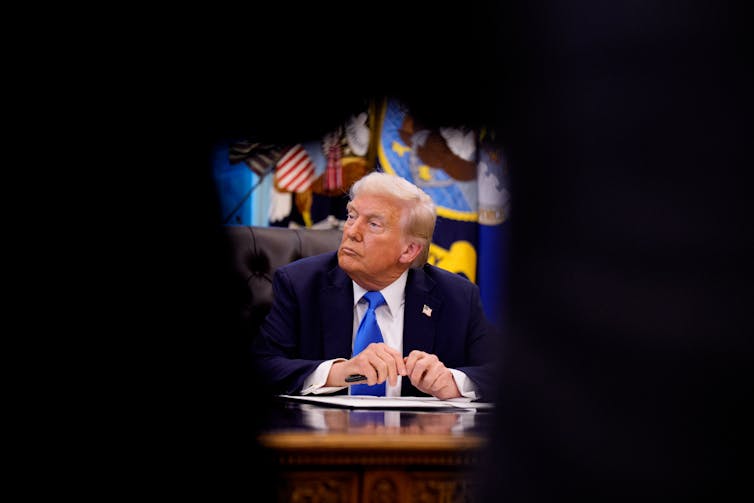Leland R. Beaumont is an independent wisdom researcher who is seeking real good. He is currently developing the Applied Wisdom curriculum on Wikiversity.
Hans carefully considered the advantages and disadvantages of sharing the productivity dividend with the displaced workers.
One objection critics raised is that hard work itself is a virtue, and idleness is a vice. Certainly, many cultures value hard work, and we have heard the proverb, “an idle mind is the devil's workshop.” The work ethic is the belief that work and diligence have moral benefits and an inherent ability to strengthen character and individual abilities. For example, the protestant work ethic emphasizes diligence, discipline, and frugality. The American Dream is described as being achieved through hard work. It is often claimed that Thomas A. Edison said, “The three great essentials to achieve anything worthwhile are, first, hard work; second, stick-to-itiveness; third, common sense.” These critics go on to argue that paying people not to work sets a bad example and undermines the values that have made our country great. Some ask, hyperbolically, “What if no one ever wants to work again?”
Let’s stop to consider, what really matters? Maslow’s hierarchy of needs provides a broader analysis of what matters. As it is often represented, the pyramid begins with physiological needs, and progresses through safety, belonging and love, esteem, cognitive and aesthetic needs, culminating with self-actualization. If hard work matters, perhaps it is part of the esteem level of needs, and is not as essential as physiological needs.
Can we progress from toil to flourishing? Although good hard work— toil —has long been valued as a mark of good character, perhaps the productivity dividend will allow us to progress beyond that belief and value other needs more than toil. Certainly, there is work to be done, and someone has to do that work, however, is it still important that every able-bodied person spend most of their waking hours working? Can flourishing replace toil as a character virtue?
Economic systems similar to this productivity dividend fund have been working for some time. For example, the Alaska Permanent Fund was established in 1976. The Alaska Permanent Fund sets aside a certain share of oil revenues to continue benefiting current and all future generations of Alaskans. It is funded primarily from oil revenues that accrued when oil was extracted from Alaska’s North Slope and began flowing to market through the Trans-Alaska Pipeline System. The individual payout from the fund varies, but is approximately $1,000 annually to each adult Alaskan resident. Similar funds include the North Dakota Legacy Fund, the Government Pension Fund of Norway, and many other sovereign wealth funds.
Other critics object that creation of the productivity dividend fund puts us on the path toward socialism or even communism, and the failures of those economic systems are well known. Perhaps it is time to begin another Red Scare?
Socialism is a political philosophy and movement encompassing a wide range of economic and social systems which are characterized by social ownership of the means of production, as opposed to private ownership. Since Hans continues to own the Mark V shoe machine, and Hans is a private citizen, establishment of the productivity dividend fund is not any form of socialism, it is simply a decision to share profits accrued by the private business with displaced workers.
Communism is a sociopolitical, philosophical, and economic ideology within the socialist movement, whose goal is the establishment of a communist society, a socioeconomic order centered around common ownership of the means of production, distribution, and exchange that allocates products to everyone in the society. Communist society also involves the absence of private property, social classes, money, and the state. But Hans is a private citizen who continues to own the means of production (the Mark V shoe machine) and each of the active and displaced workers continue to own the same private property they owned before the productivity dividend fund was established. Once again, establishment of the productivity dividend fund is not any form of communism, it is simply a decision to share profits accrued by the private business with displaced workers.
Critics were concerned that many people would resort to crime as a way to spend their time. Of course, some did, but the majority of people found creative and productive ways to use their free time. People used their time to focus on what matters. Overall, crime rates decreased as poverty was reduced, income was more evenly distributed, and social justice increased.
Critics argued that people would no longer gain fulfillment from their work. What actually happened is that people who gained satisfaction from their work continued to work. People who disliked the drudgery of their work resigned. Working conditions were often improved to better attract and retain workers.
Another objection is that the system is unfair. Active workers are obligated to continue working, and displaced workers are being paid not to work. Recall that Hans gave all of the active workers a choice to keep their jobs and continue working, or to leave and receive payments from the productivity dividend fund. To achieve the needed balance of five workers staying and five workers leaving, Hans had to adjust the level of the fund payout to the displaced workers. Certainly, if the distribution to displaced workers was equal to their full salary, the offer would have been so generous that everyone would be likely to leave. Through a series of discussions with the workers, he determined that a payout of approximately 40% of full salary would result in five workers deciding to leave and five workers deciding to stay. This is a fair result, obtained through informed consent and agency of all the participants. The funds not distributed to the displaced workers were used to reduce shoe prices, increase worker benefits, and increase returns to Hans and other stakeholders in the company.
Ultimately, Hans faced the crucial decision of whether redistributing the productivity dividend to the displaced workers, instead of the customers and the business, might render his enterprise less competitive. He had to take into account the likelihood of rival businesses simultaneously enhancing their productivity, thereby potentially triggering price reductions, intensified marketing campaigns, and diminished profits. The question lingered: could his inclination towards benevolence inadvertently lead to the downfall of his business?
In his deliberations, he came to a realization regarding the global shoe market. This market was inherently limited by the number of feet in the world. While the global population was indeed expanding, shoes have a finite lifespan, and ever-shifting fashion trends increase shoe turnover, the market had matured and was approaching saturation. To sell more shoes, Hans understood he would be compelled to make pricing concessions, accompanied by increased marketing expenditures, which in turn could erode his profit margins.
Happily, Hans became acquainted with the concept of benefit corporations, which take into account not only profit but also the positive influence on society, workers, the community, and the environment as legally defined objectives. These corporations explicitly include these impacts in their definition of the “best interest of the corporation.” Fortunately, this is what he wanted to do.
He decided to reorganize as a benefit corporation, share only 40% of the savings with the displaced workers, and to maintain his prices and marketing efforts at the same level as before installing the Mark V shoe machine. He could use his share of the savings to reduce costs or increase marketing efforts if he began to fall behind his competitors.
As Hans went forward with his bold plan, he worried if he made the right decision.
This is the second in a three-part series exploring the future of productivity. Re-visit The Fulcrum for the final installment in this series on Monday, August 21st where we dive into the concepts of transformation exhibited by increased productivity.





















